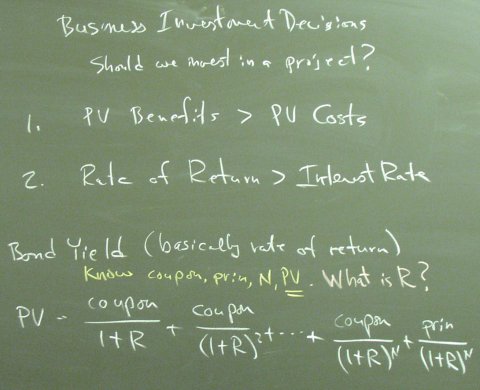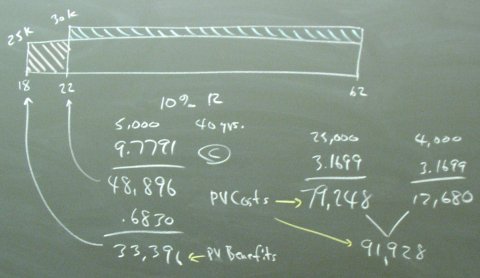February 06, 2003
Should you go to college?
We used going to college as a model for the kinds of investment decisions facing firms. It takes four years to start seeing a return from the investment just as it takes a while to build a factory. The costs are paid up front.
We can think about the investment decision in two ways.

The calculations for bond yields are complicated enough to pursuade us to use the present value approach for our numerical examples.
Project A and Project B illustrate the point that the rate of return and the present value approaches yield the same conclusion.

Discounting at 10%, the present value of the benefits is far less than the present value of the costs.

If we are to justify going to college, we will need to think back to Tuesday's class and invoke the real interest rate concept.
If income grows over time at 1% less than the interest rate, then going to college has a positive net present value.

These calculations, of course, only measure the private return to education. There is a large positive externality as well. Society benefits from having educated citizens, so much so that the State funds this university.
Posted by bparke at February 6, 2003 05:22 PM